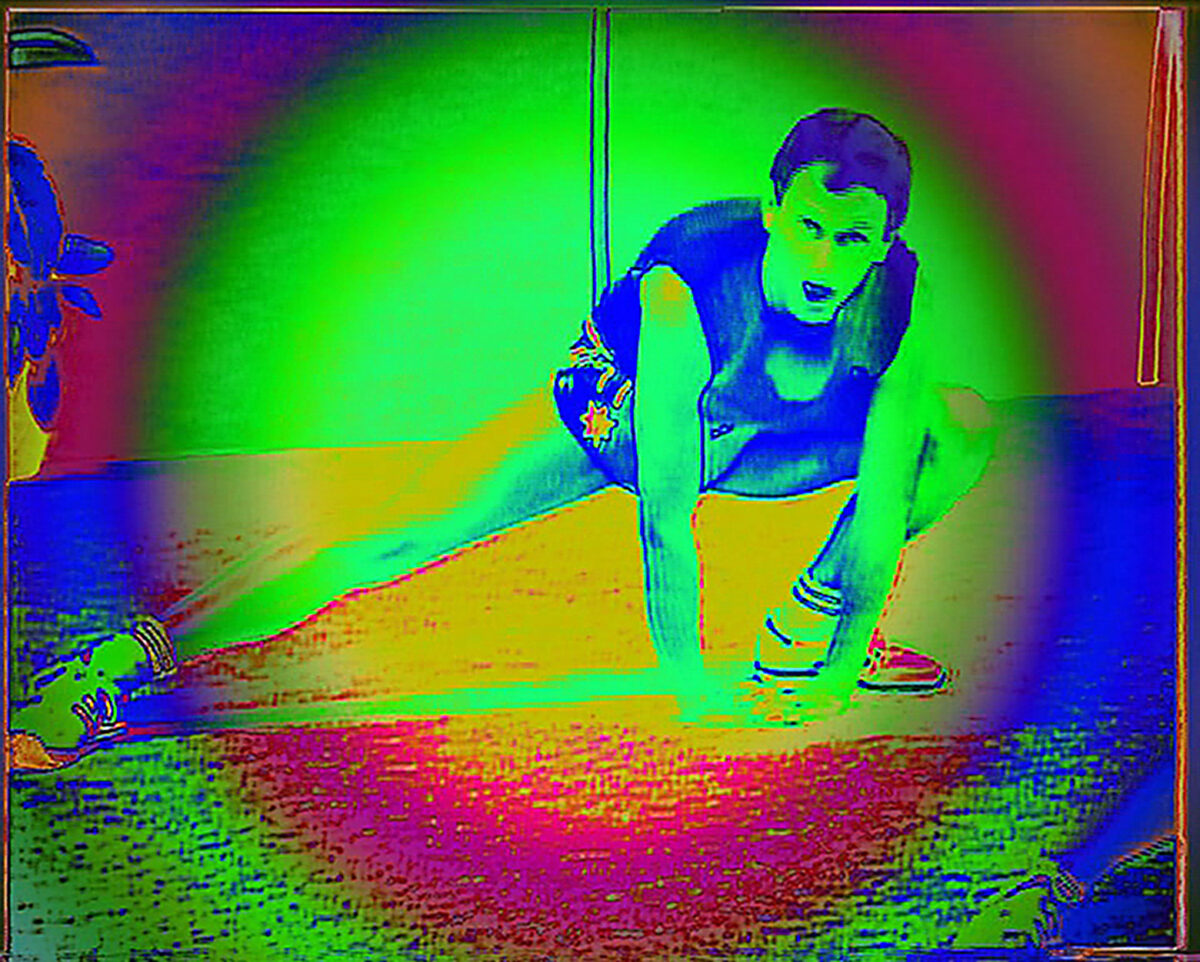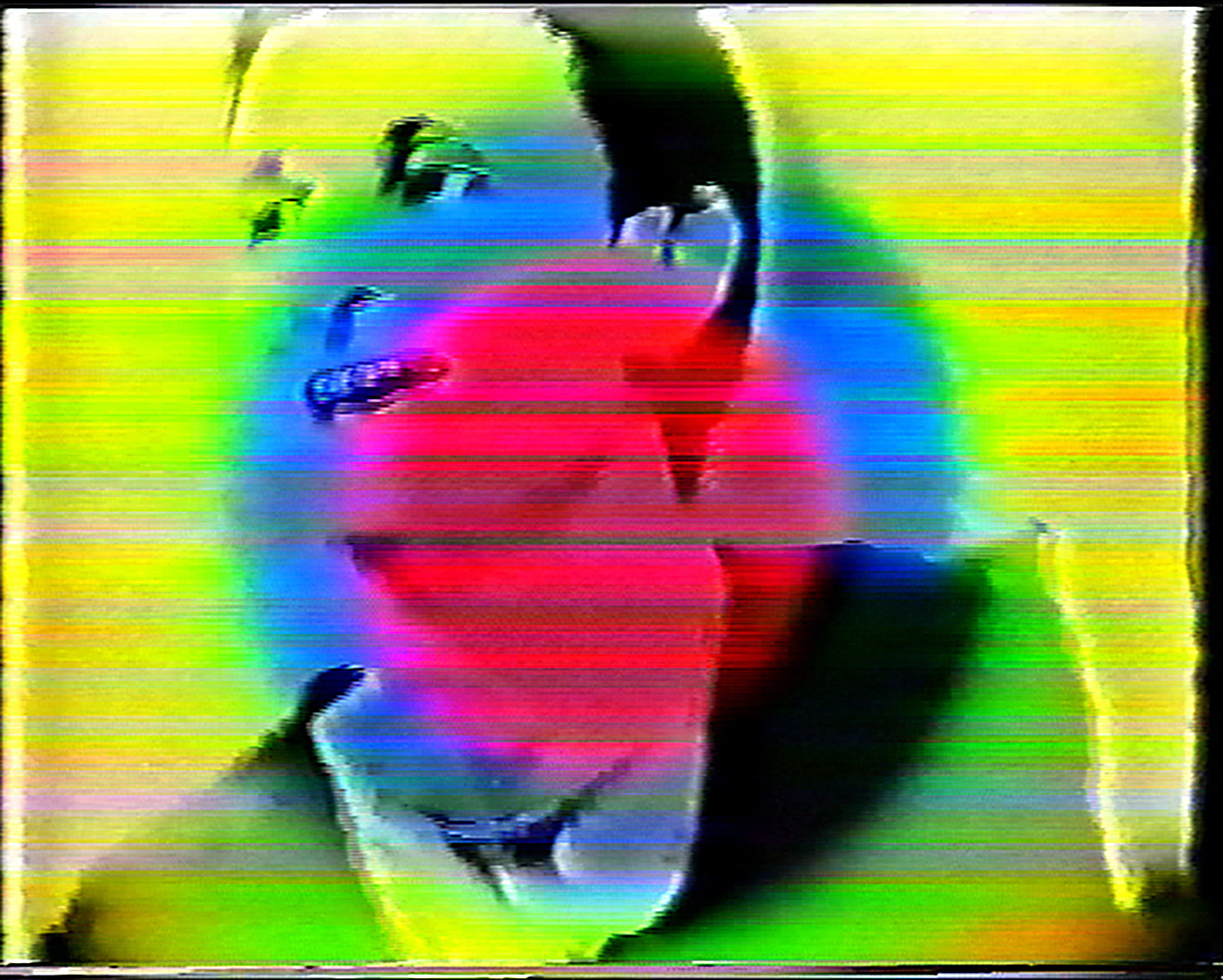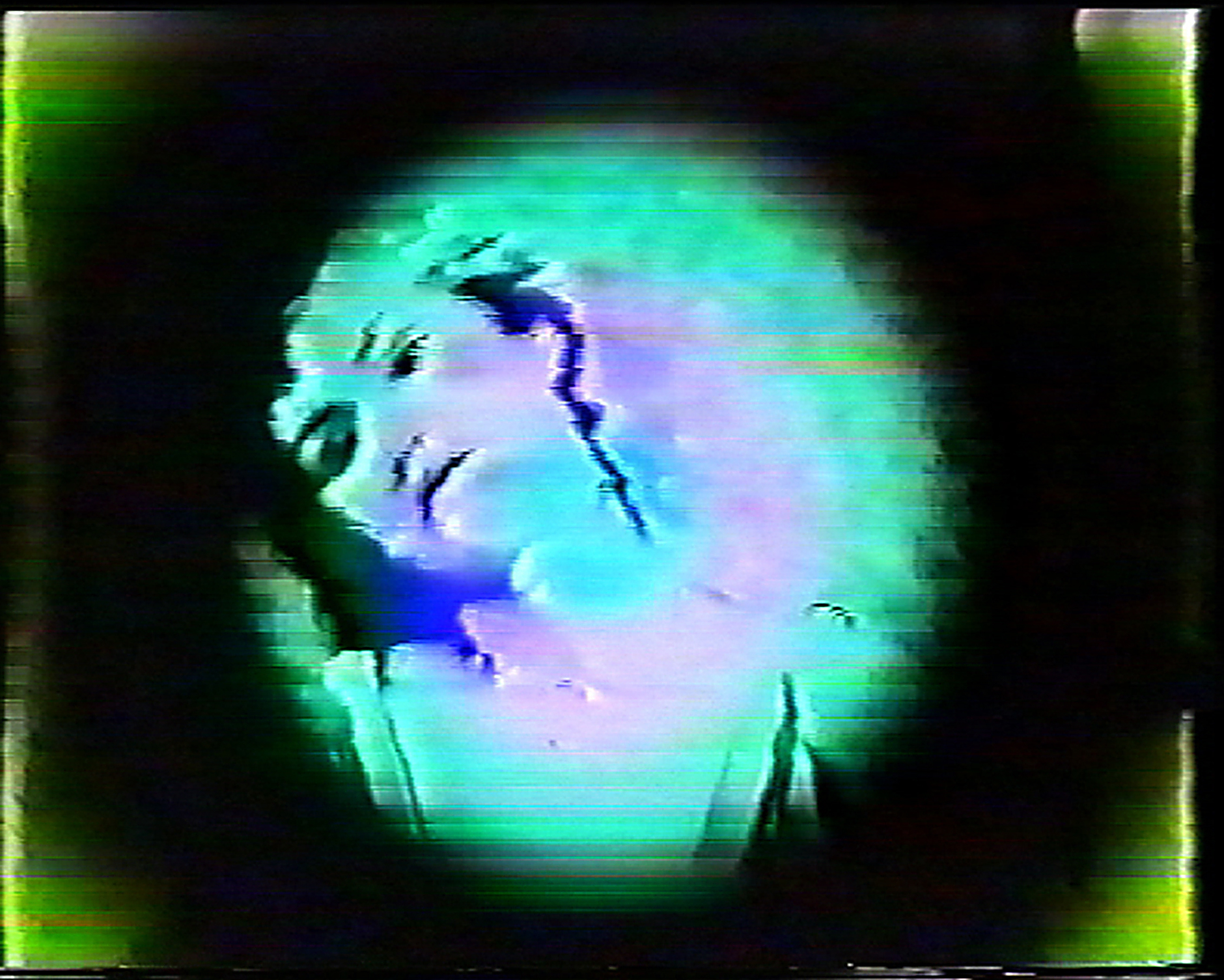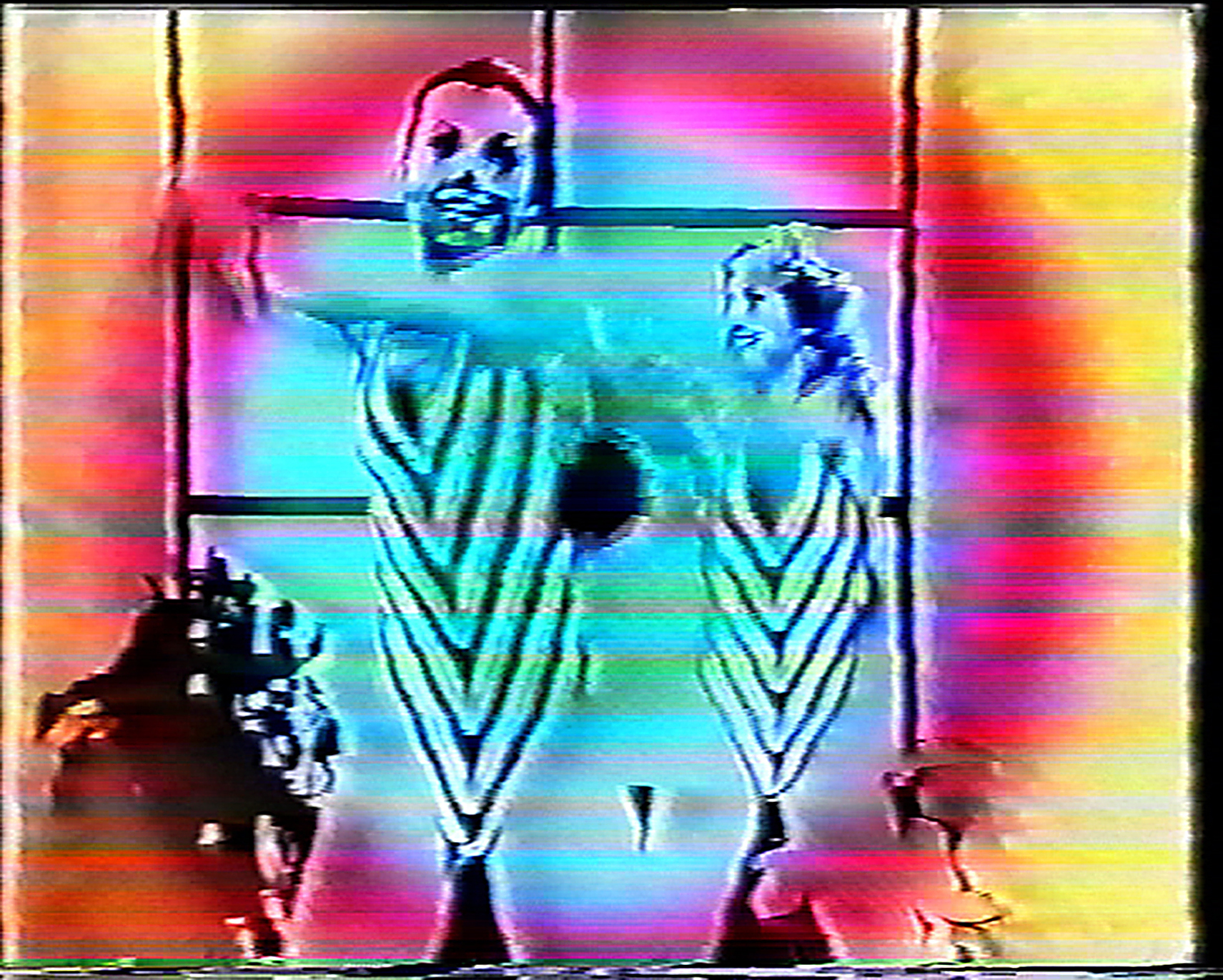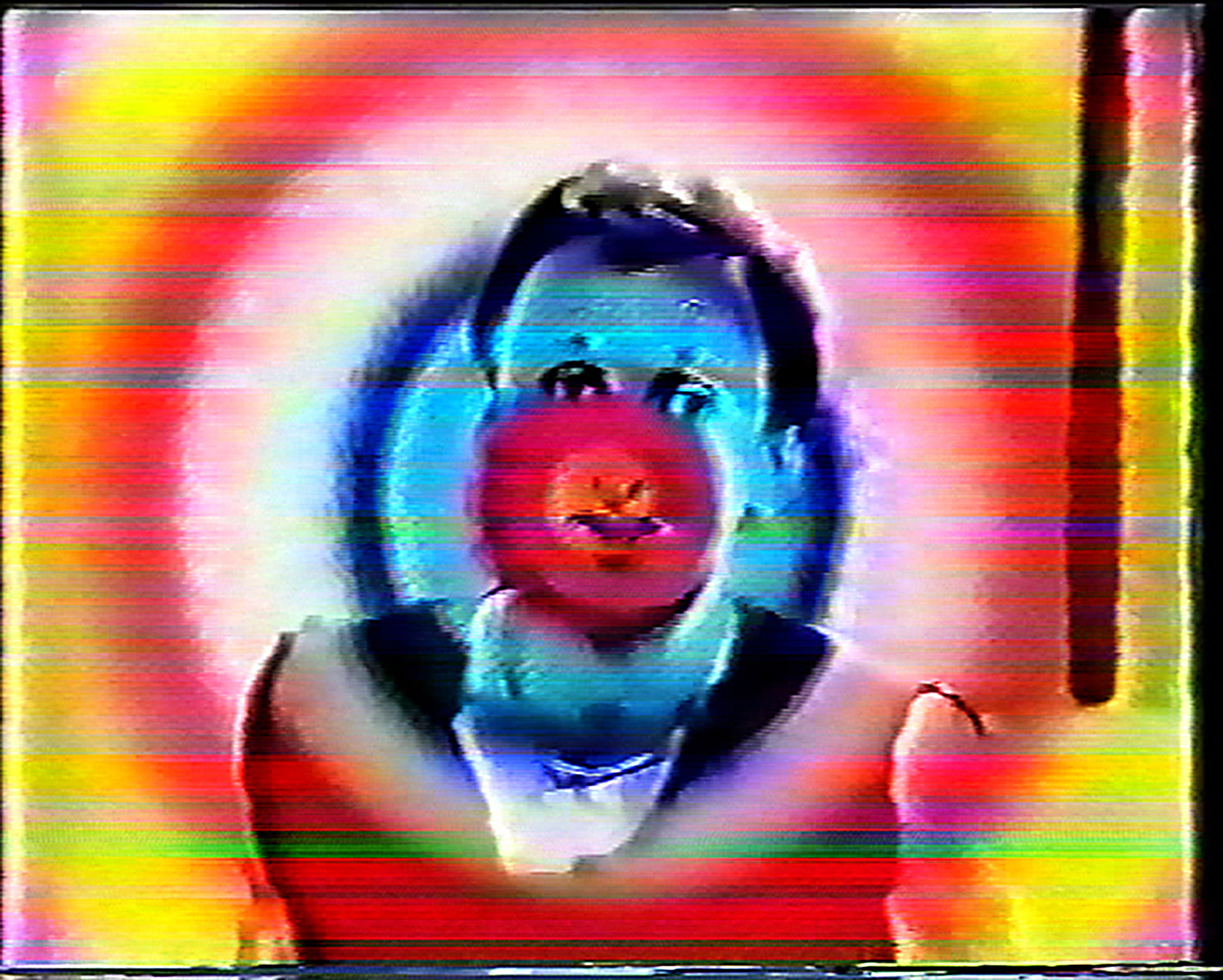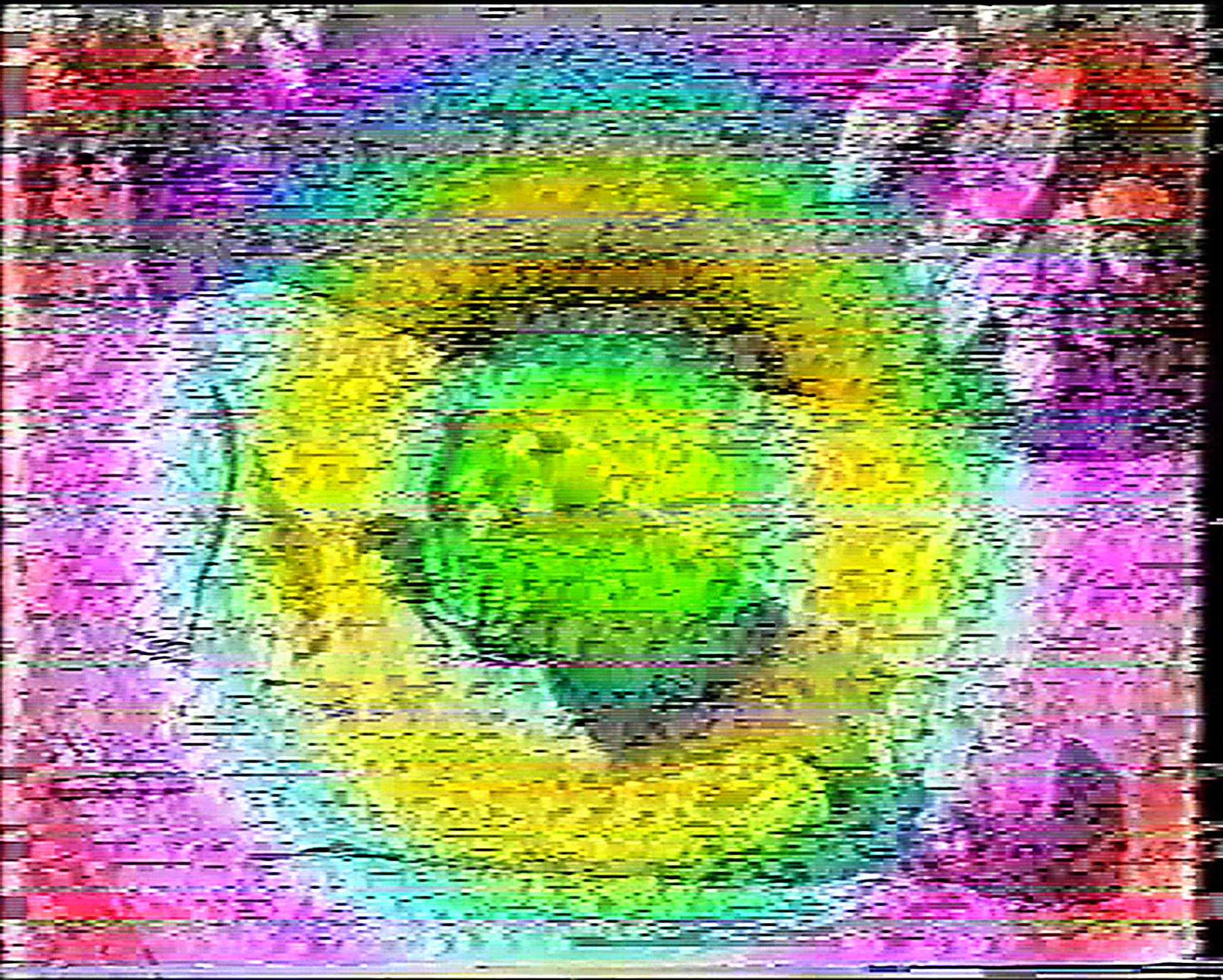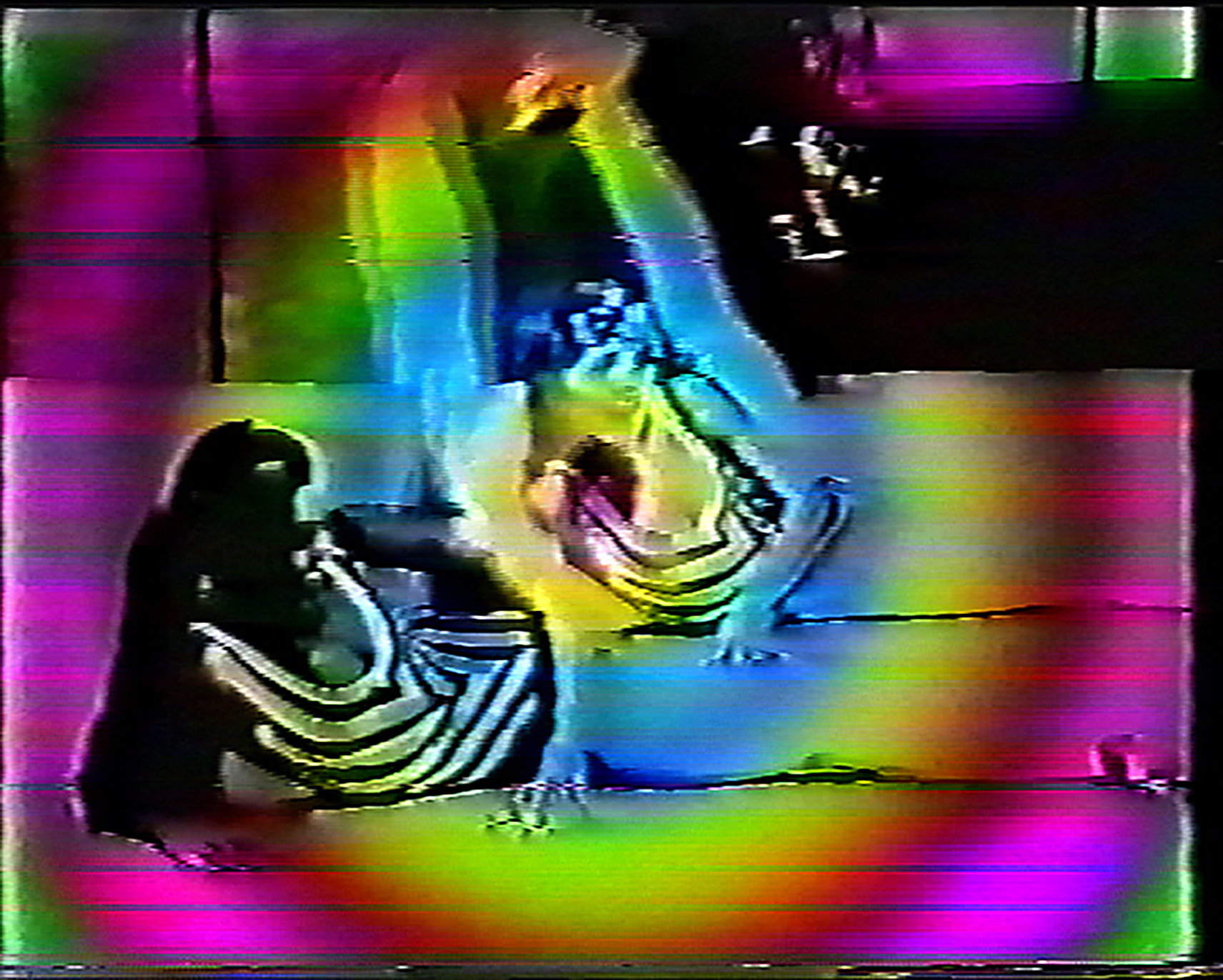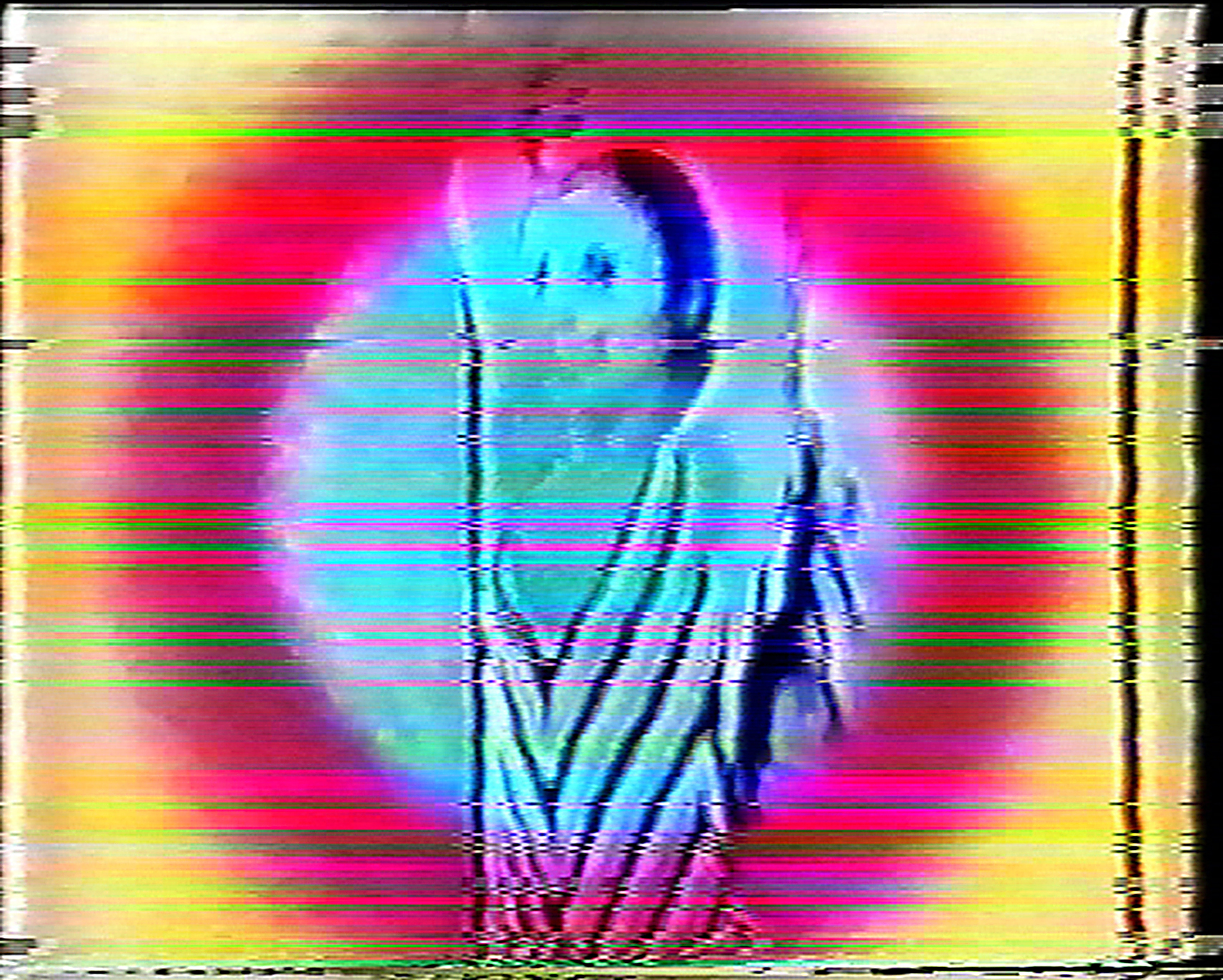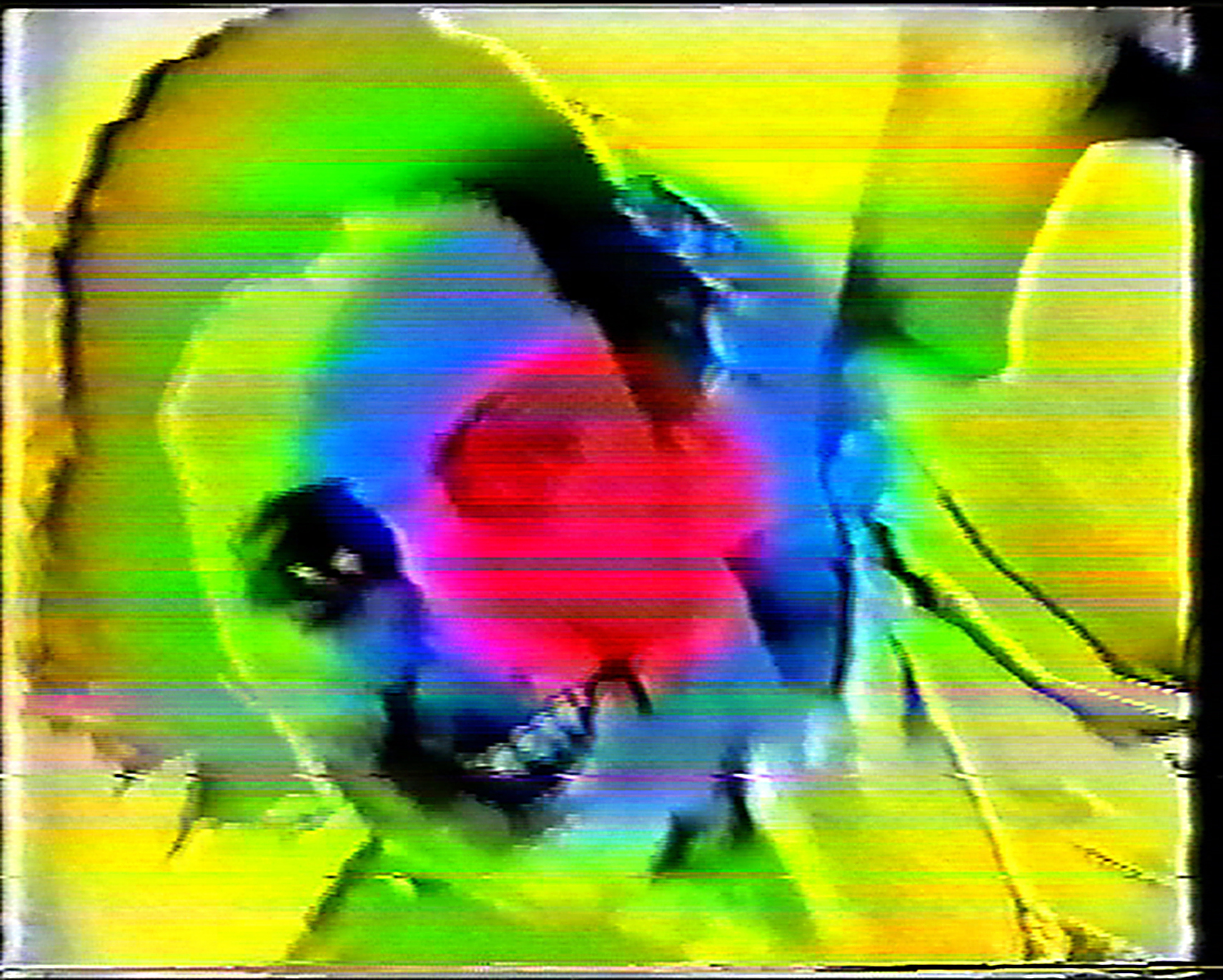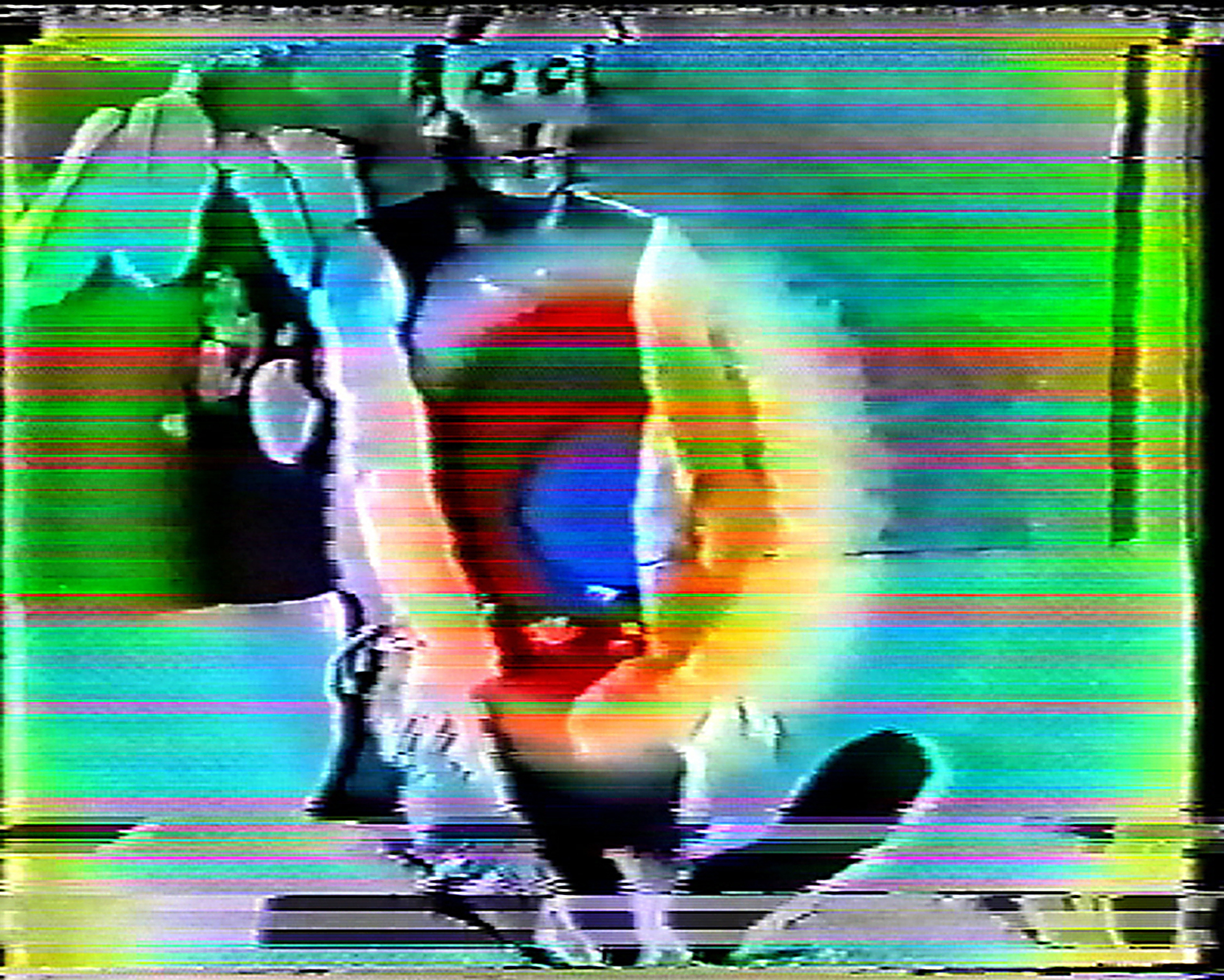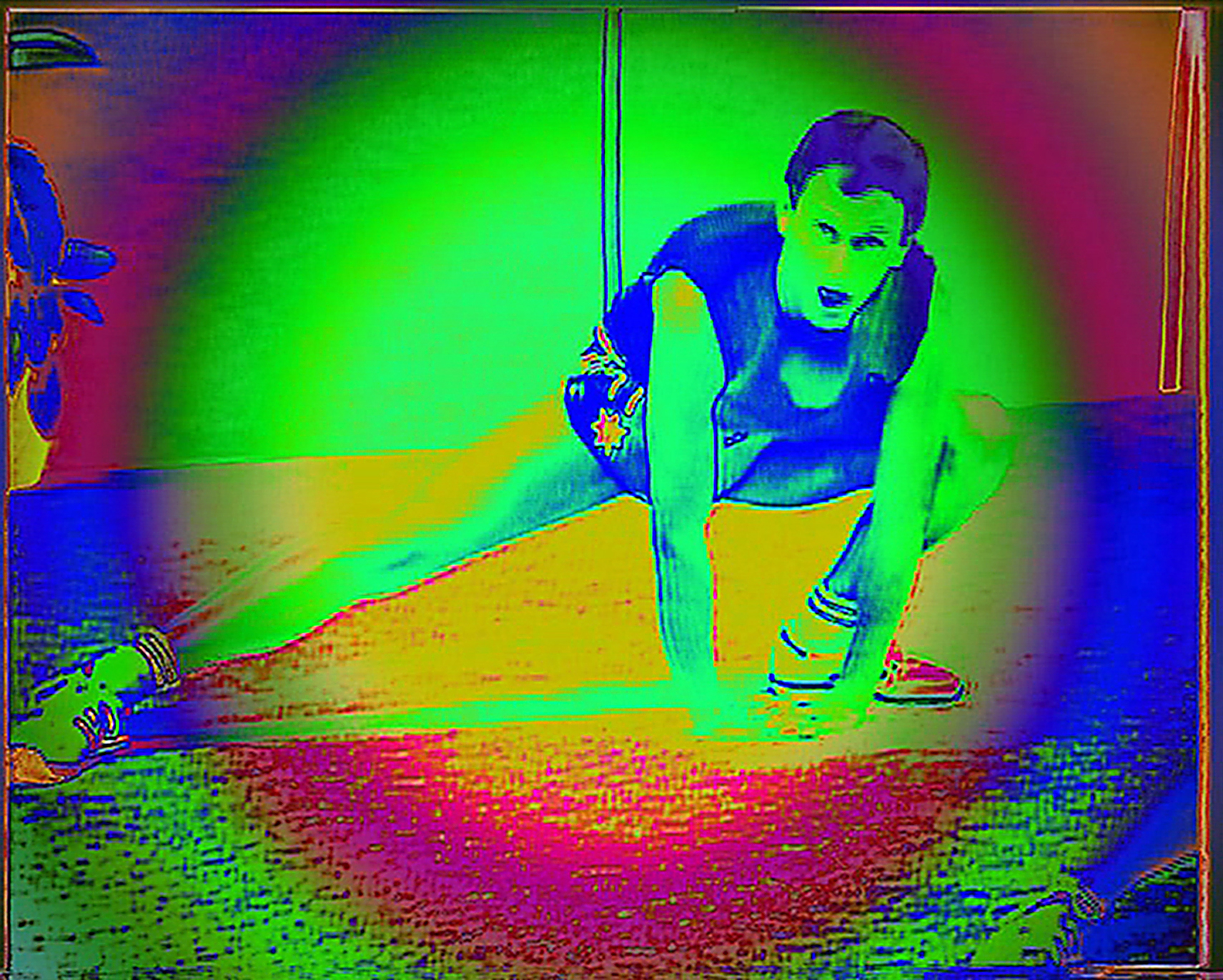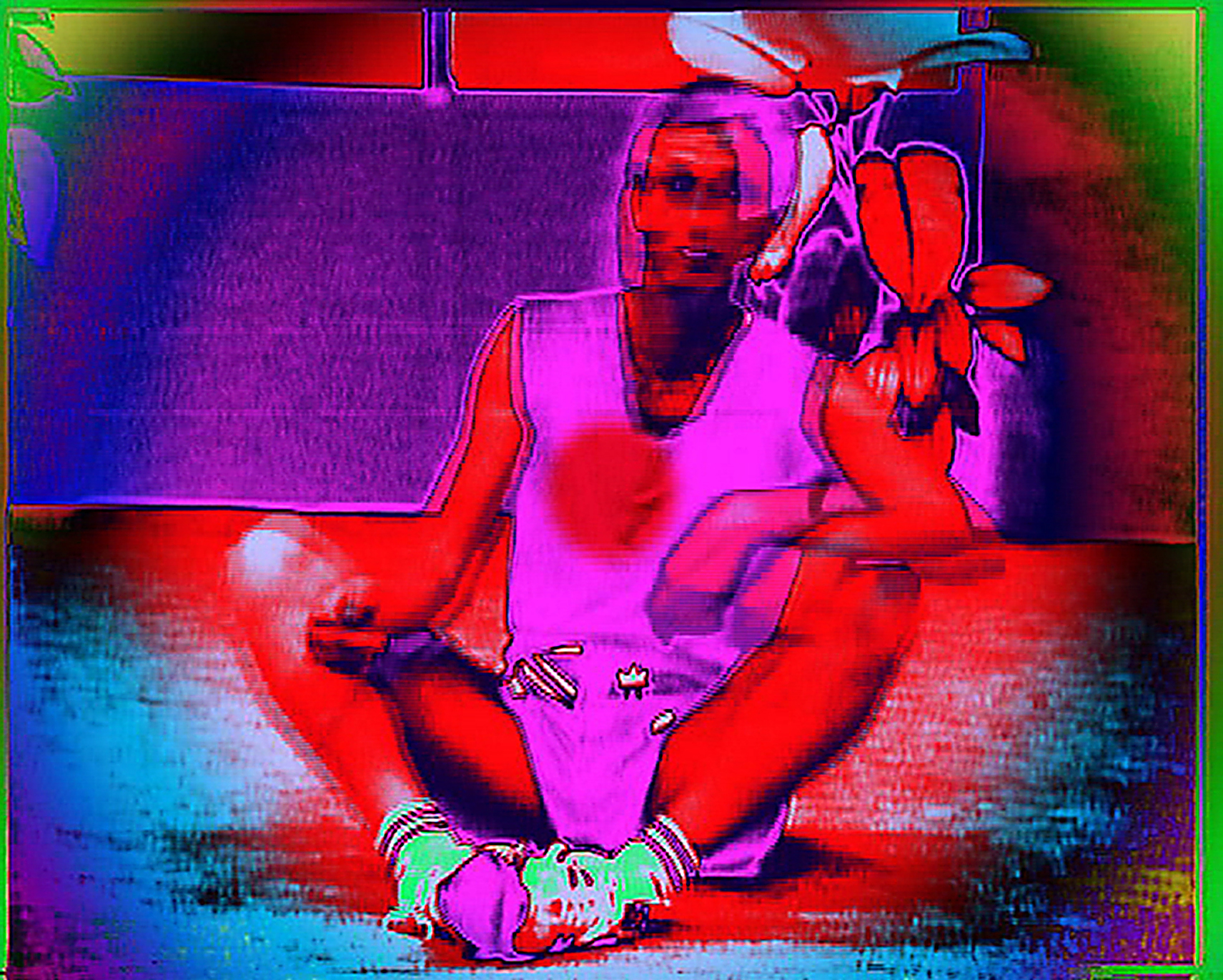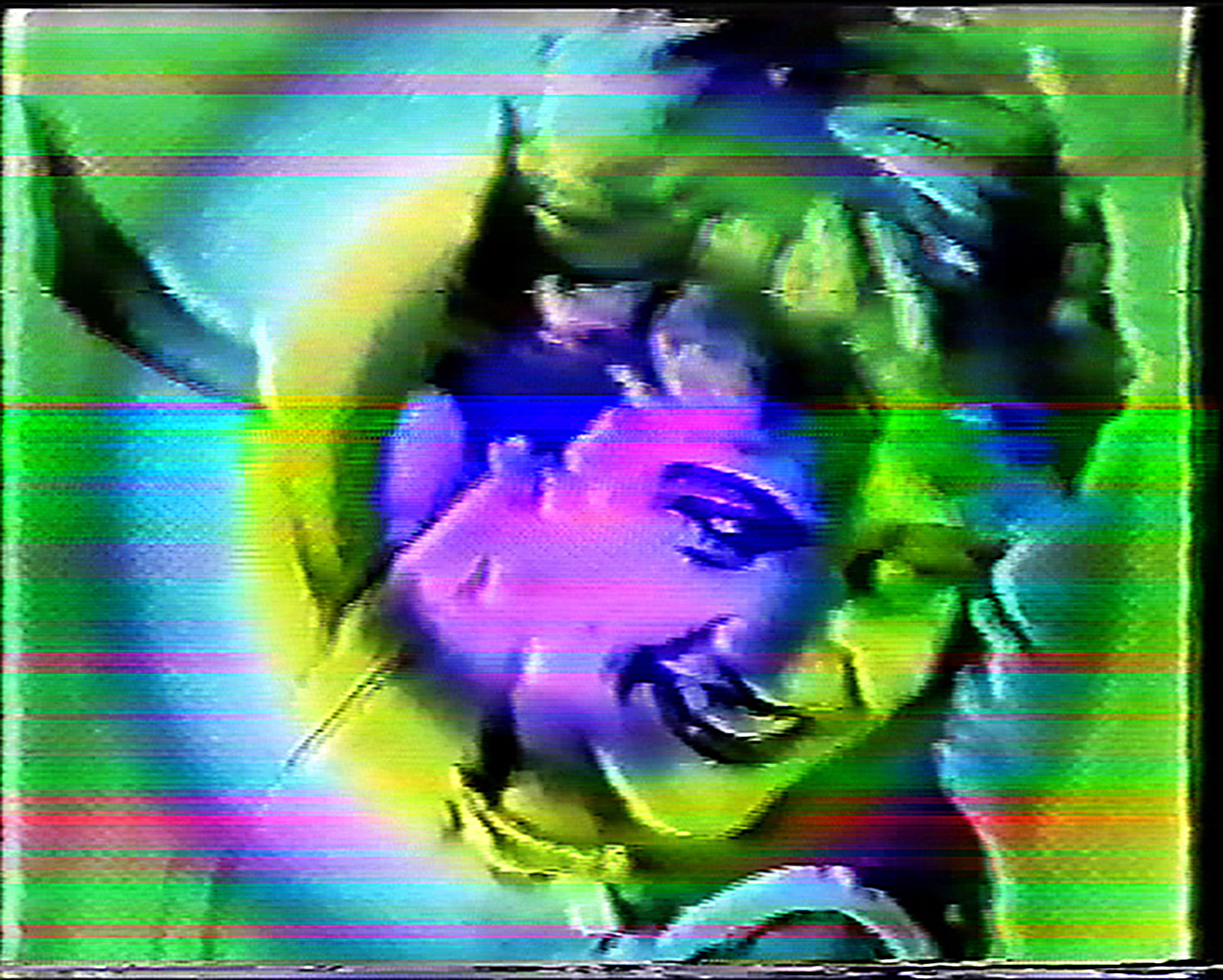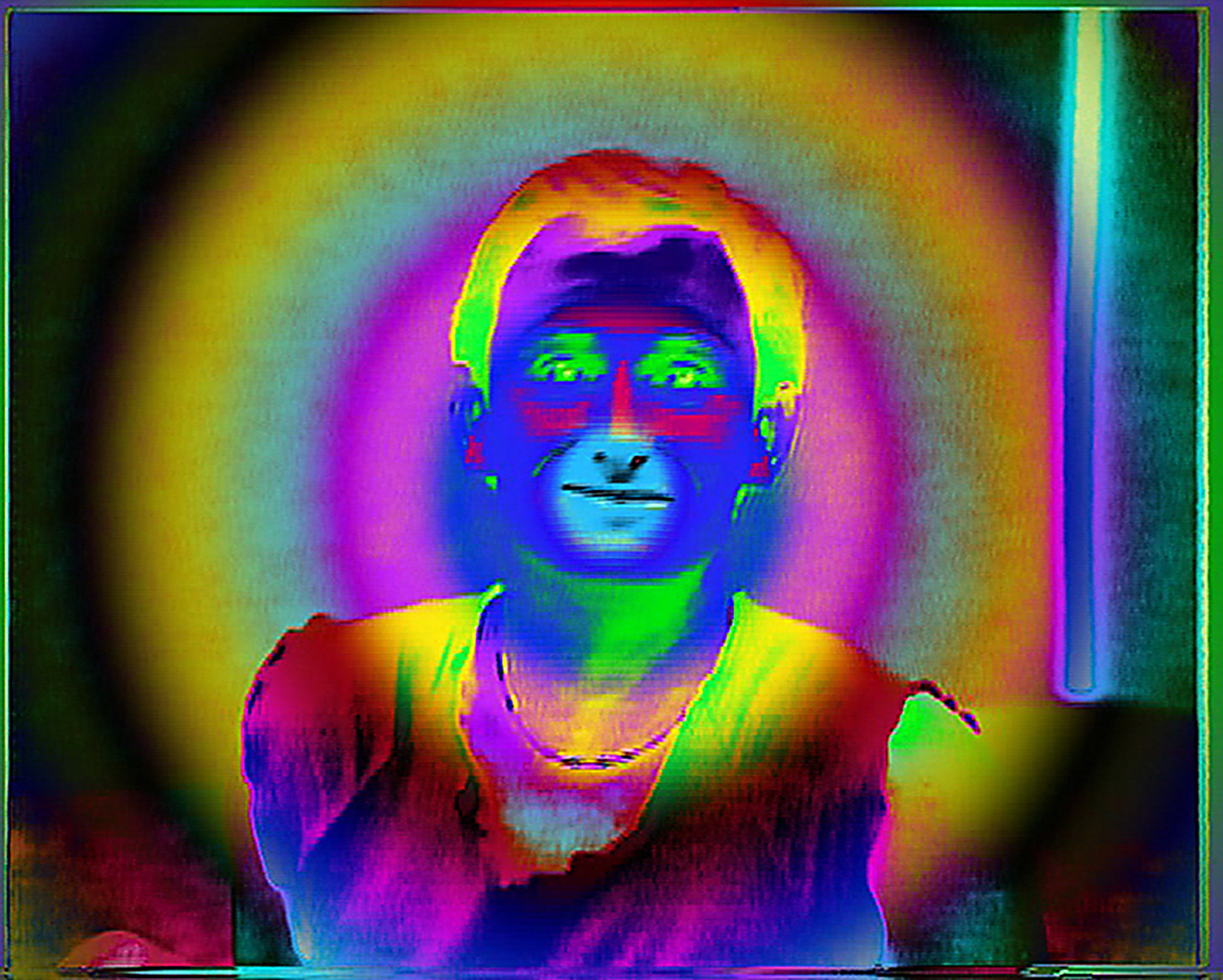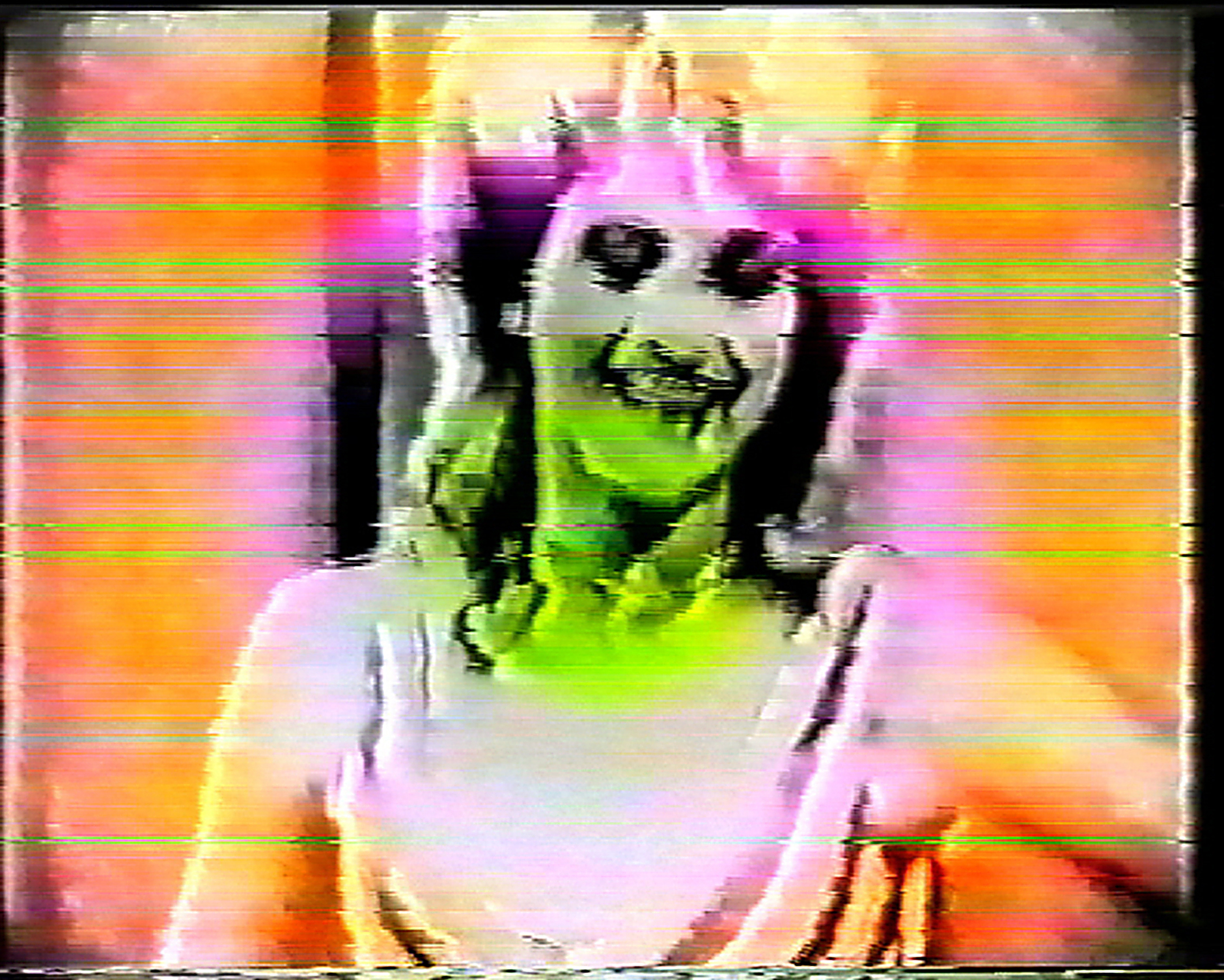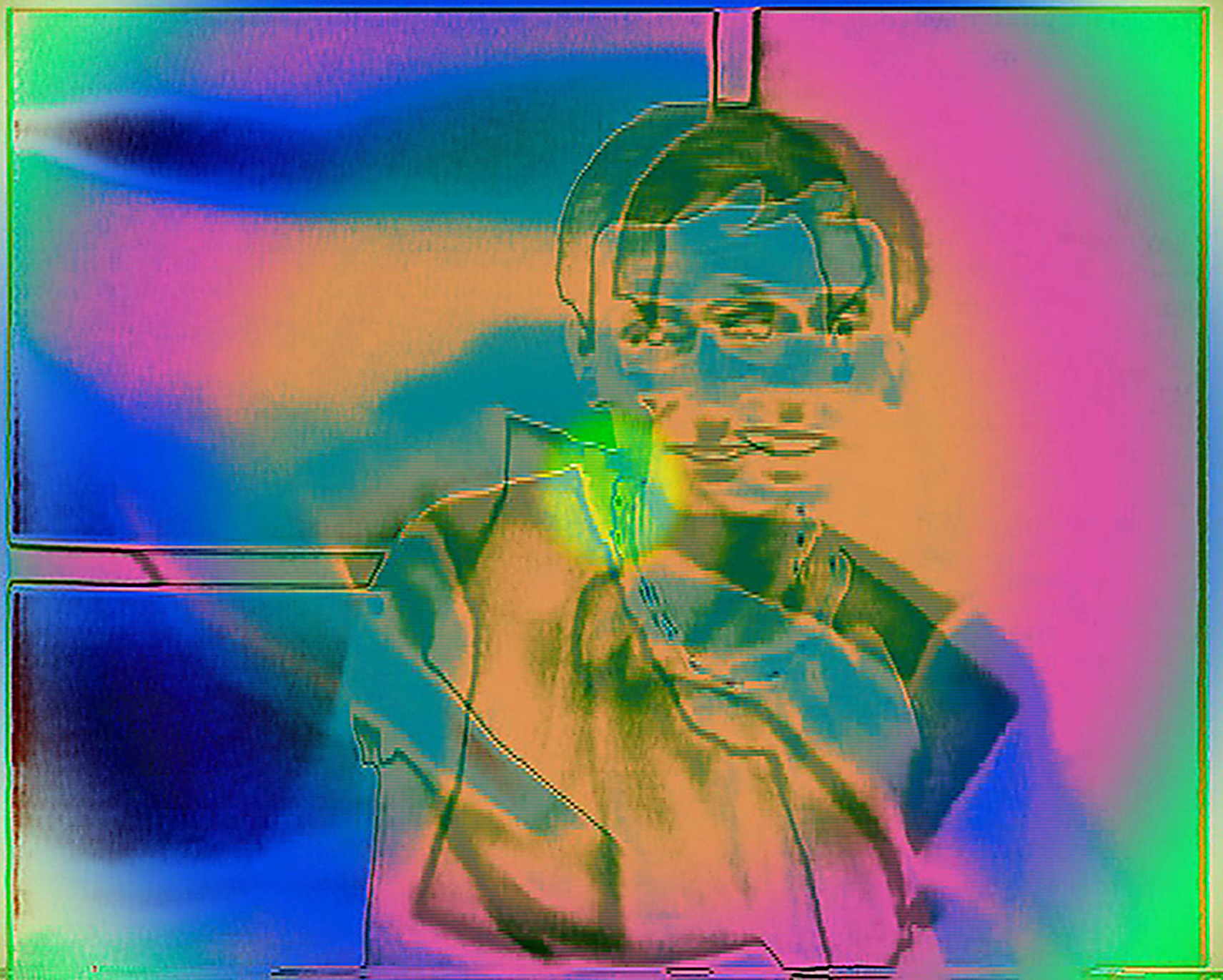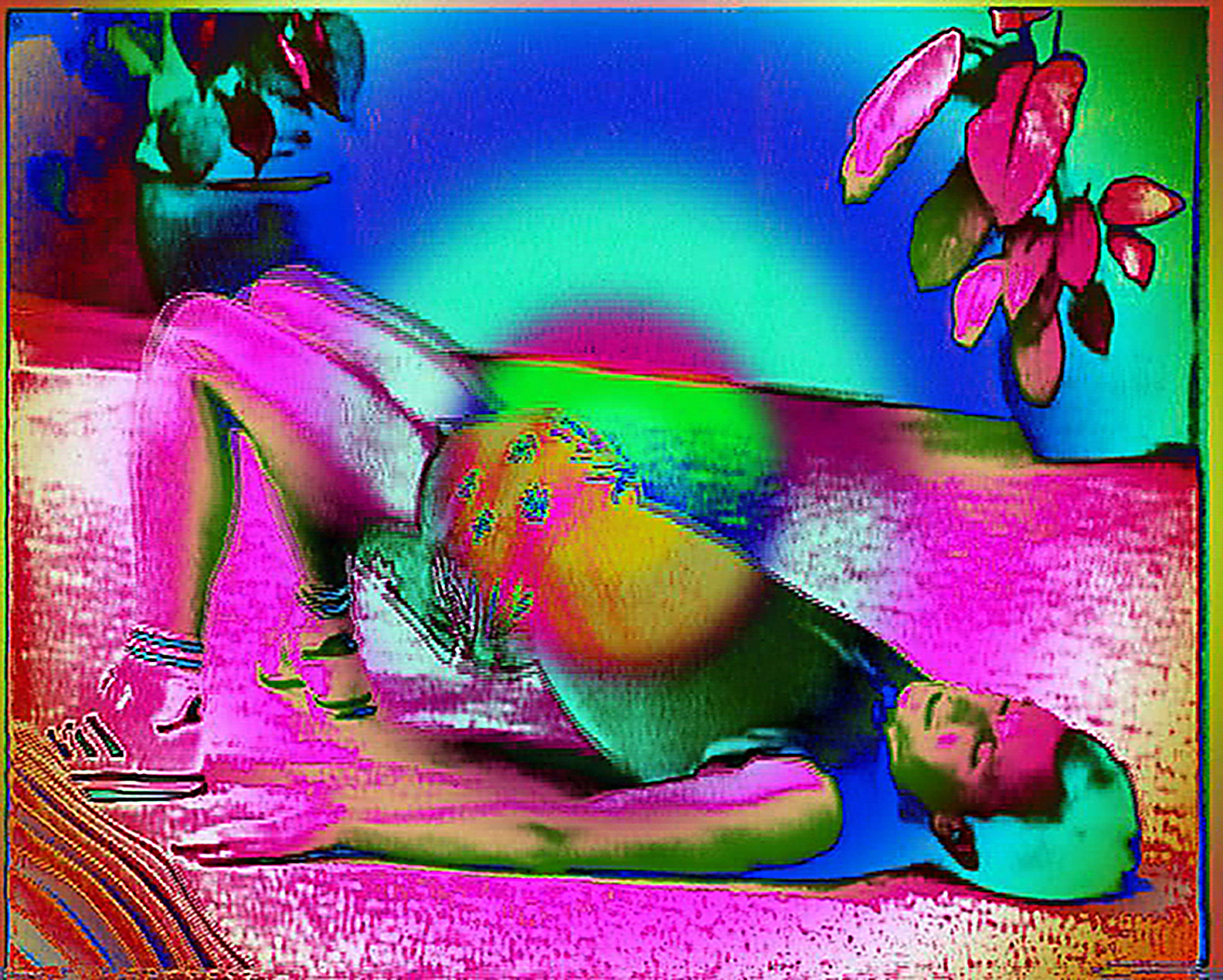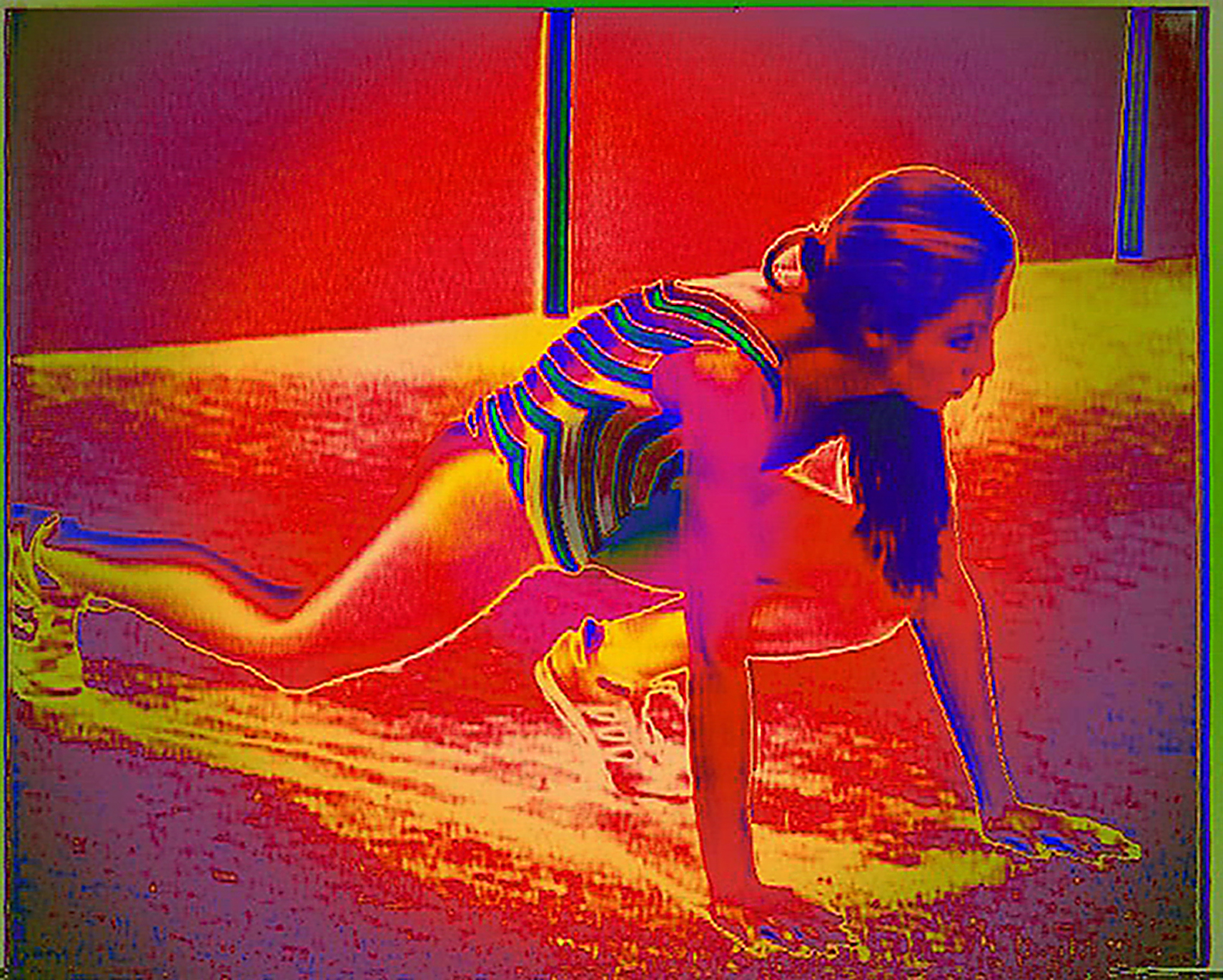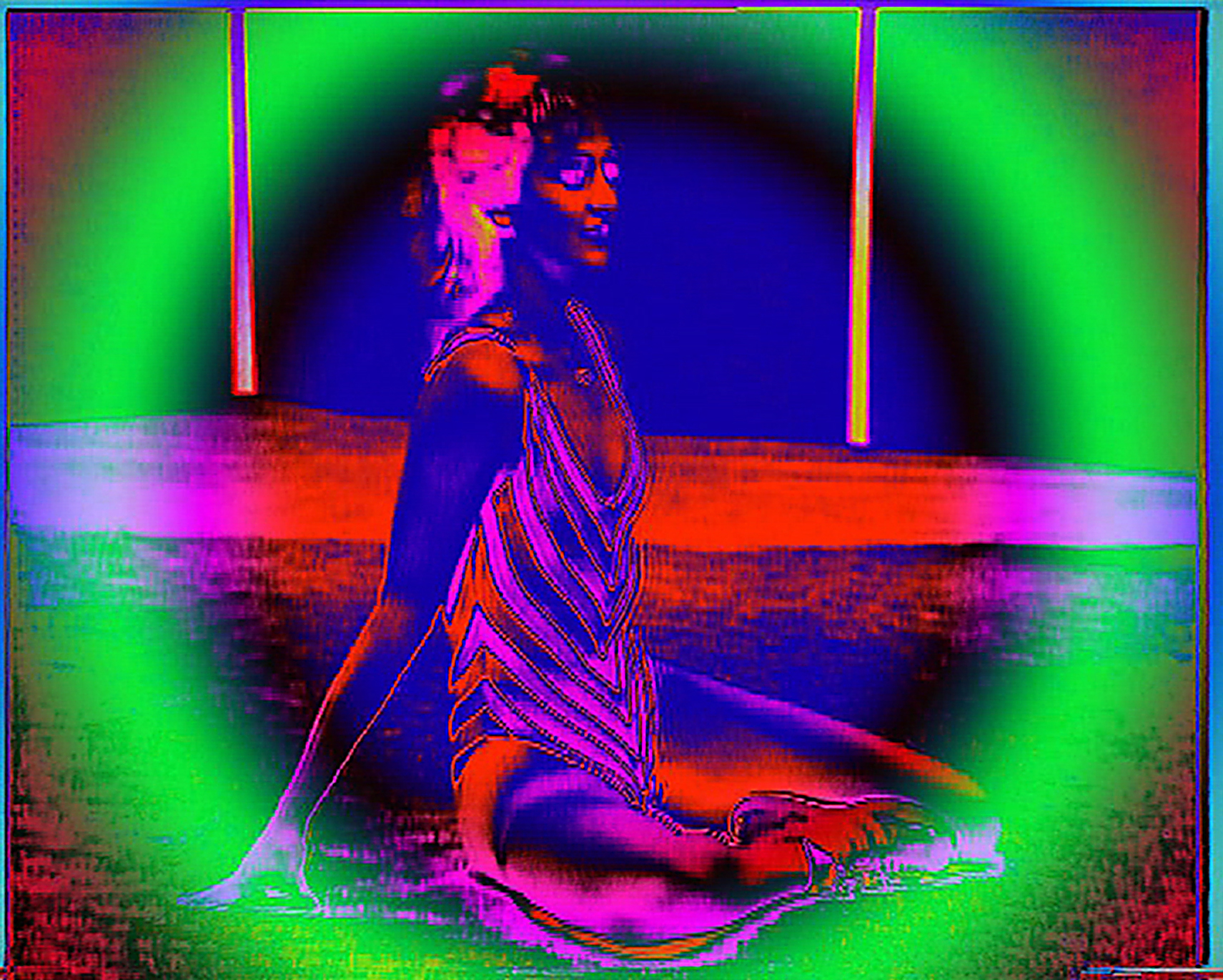2014
2 channel video with sound, wall paper, 2 shelves, 2 iPads, 2 headphones
Duration: 31:00, 6:14 minutes looped
Edition of 1 (+ an artist’s proof)
Gradients remind me of curated spectrums where I get to choose the range and relationship between colors. When working with gradients, I deconstruct white light into separate color values, then reconfigure them to suit my aesthetic needs. Upon first seeing David McDiarmid’s Toxic Queen presents Funeral hits of the 90s, it is the lurid gradient on the cover that catches my eye, instantly hooking me.
What strikes me about the audio mix-tape is how a carefully selected and curated group of songs—shared between friends and loved ones—can forge significant bonds and cement relationships. So much self and effort is invested in making a mix-tape. I wonder if a curated spectrum can have the same power.
Upon listening to the tape, I am struck by how little of it I like. This doesn’t surprise me, as I was never the intended recipient of something so intimate. This leads me to wonder: would we have been friends given the opportunity? Would I have “got” him, and he me, since we don’t share musical taste? It is a definite possibility that he would not have liked me. So from this position of imagined rejection, my response is a curated gradient mix-tape for the Toxic Queen I never met.
For this interpretation, the material object forms the foundation of the work. There are two sides to the tape, each with an approximate duration of 31 minutes. My usual photographic approach seems inappropriate in this instance. Instead, the work created is durational and comprises two related video pieces — Side A and Side B, Acid remix (rewind). Since the mix-tape exists physically and uses an analogue playback method, I decide a major component of Side A’s production process must occur on tape and in real time. This means working with near-obsolete technology—VHS.
I visit the Australian Lesbian and Gay Archive for further research and get to see and touch further examples of McDiarmid’s work. There is an energy and urgency throughout his oeuvre. Fluorescent pink clashes with fluorescent green for Peter Tully’s 1991 exhibition poster Urban Tribalwear and Beyond. It is high energy and visually assaulting. I am particularly interested in posters that are screen printed directly onto old wallpaper—different patterned substrates used throughout the print run.
This layering and conflation of disparate visual texts is something my interpretation explores literally. Video track one, created by me, is a colorful radial gradient animation with a duration of 31 minutes.
When searching for videos to merge with it, I look for things that might relate to McDiarmid and his work. Videos with kitsch and camp aesthetics, videos with covert or overt sexuality, videos with homosexual themes or actors, and videos about Australia. I look for videos with meaningful dates too. The pickings are slim at my local op-shop as it is run by a conservative religious sect. In the end, I spend $3.00 buying nine tapes. Perhaps McDiarmid sourced his wallpaper substrates from his local op-shop too.
The video footage I choose to merge with my gradient animation is made in 1984, the year that the retrovirus that causes AIDS is scientifically identified. The video promotes healthy bodies through exercise to music. Produced by the University of Western Australia, Aerobics Down Under takes place on a sparse set with three women wearing geometric patterned leotards and a male instructor wearing Australian flag shorts. He also wears a tank top with ripped sleeves. I don’t know why, but he reminds me a little of Peter Allen.
On a formal level, Aerobics Down Under’s duration (including copyright warning, opening and closing credits) matches perfectly with that of McDiarmid’s mix-tape. Aesthetically, the visual simplicity of it compliments my own gradient animation. There is something hypnotic about watching exercising bodies being obliterated by cosmic colorful gradients. By merging these two elements, I aim to mirror what McDiarmid is doing by screen printing directly onto wallpaper—merging disparate texts to create new meaning.
The music accompanying Aerobics Down Under is terrible and the only song I like is by The Swingers, Counting the Beat — no pun intended. There is a poignant contrast between these healthy exercising bodies on screen and the self-defined Toxic Queen of the mix-tape. I wonder if this moniker is referencing the pharmaceuticals keeping him alive, making art, and being an activist.
I don’t know if it is true, but Funeral Hits of the 90s is said to have been created for his own. I wonder how many times he dubbed it — I know of at least three. Since dubbing tape occurs in real-time, the duplication of this memento mori seems a confronting thing to invest in, especially if time is what you are short of.
As an act of solidarity to McDiarmid, Side A has been dubbed backwards and forwards between VHS tapes many times. Through this repetitive process, random errors creep into the work. These errors get amplified and magnified with each subsequent generation, a process mimicking infection. It eventually leads to a point of audiovisual destruction—static, noise, self-erasing. Destruction as a by-product of process is something I am interested in exploring further.
The inspiration for Side B, Acid remix (rewind) comes from the 12-inch singles of my youth. 12-inch singles were often re-mixed and extended versions of songs that already existed. In this vein, Side B, Acid remix (rewind) takes the individual visual elements of Side A, pulls them apart, filters them, and re-merges them to create something new, yet familiar.
For this remix, the video and audio track are reversed and sped up. I wanted to make the act of rewinding (a process becoming obsolete in our digital on-demand society) an aesthetic device. Rewinding is also something I did a lot of whilst dubbing Side A. The tempo and pitch contrast created by this process also create irregular points in time where for a fleeting moment, the two works are in sync on screen. The comic effect, though not intentional is a welcome byproduct of the rewinding process.
One of the default gradients in Photoshop is called “Spectrum,” and McDiarmid used it to great effect in his later works. This gradient cycles from light blue, dark blue, magenta, red, yellow to green. This particular gradient is evident in his Rainbow Aphorisms series and on the cover of Toxic Queen presents Funeral hits of the 90s. I like the fact that he didn’t alter the gradient, that he felt confident enough to explore it in its default state. So when filtering the video for Side B, Acid remix (rewind), I only use what is available as standard in the video editing software. The filter I choose is called “Gradient Colorize”; I couldn’t resist such an aptly named filter. It cycles a user-defined group of colors through the video, creating a very colorful and hallucinogenic effect. Over this, my remixed gradient animation is set to invert any color it touches on the video track below it, flipping colors between positive and negative.
The final result reminds me of bad music video clips from the 80s, which is the mix-tape’s and walkman’s heyday. These days, I am the lucky recipient of regular DJ mixes by my friend WH. He shares them using Dropbox and I download them directly to my phone and tablet—the walkman’s contemporary equivalent.
Vital Signs – Interpreting the archive was initiated by the Australian Lesbian and Gay Archive. Curators Angela Bailey and Nick Henderson invited artists to respond to an object from the archive for the show.
Exhibiting artists: Deborah Kelly, Marcus Bunyan, Ray Cook, Salote Tawale, Penny Byrne and Peter Lambropoulos
